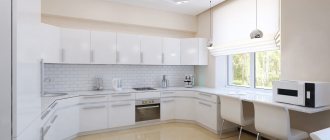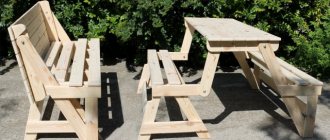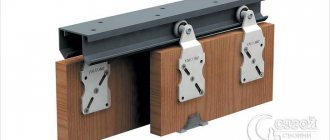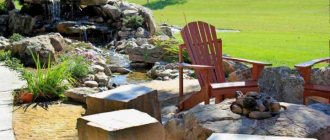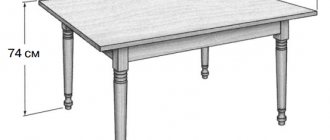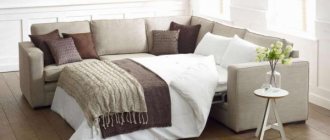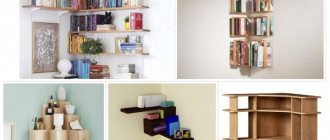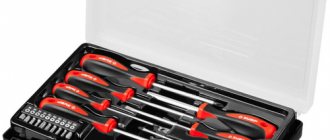Wooden lining is often used when finishing walls and ceilings. This material is comfortable and has an attractive appearance.
Another advantage of lining is that you can make the lining yourself. Of course, to do this you need to learn the production technology itself, as well as purchase some additional equipment. But after this, the production of lining can become an additional source of income for you.
So, in this article we will learn how to make lining with your own hands, what tools and materials are needed for this.
What determines the quality of homemade lining
Working with lumber is much more difficult than working with metal. In nature, no two boards are completely identical, not to mention the different properties of soft and hard woods. Metal does not have knots, does not absorb moisture, does not have developmental defects, etc. And these indicators influence the processing technology. Industrial equipment makes it possible to greatly simplify the process due to the large mass of machines, precision adjustments, stable mechanical feed and strong pressing.
At home, all cutting parameters must be observed independently and quickly changed depending on the characteristics of the board and the capabilities of the machine. What should you keep in mind?
Pay attention to the location of the grain; never process lumber against the grain. Monitor the condition of the bearings. The slightest beating will certainly affect the roughness of the surfaces. As soon as it is discovered that the machine shaft is a little wobbly, the bearing must be urgently changed or, if possible, adjusted. Tenths of a millimeter of vibration significantly degrade the final quality. The serviceability of cutting tools is one of the important components of surface cleanliness. Saws and cutters must be sharp. If you make cutters yourself, then use only durable grades of tool steel. The geometry of all cutters must be the same. Otherwise, some of them will not work, and this is a very undesirable phenomenon. Position the cutters accurately, do not rush. It is very difficult for an inexperienced master to set all the cutters at once, do not be discouraged. Lose more time, but achieve the desired result. The lost time will be more than repaid in the future.
The more cutters, the better. If the head allows you to install four, then do so, do not work with two. Four cutters slightly increase the installation time, but then the machine works longer – they become less dull.
Always use exactly the same wedges to secure the knives. Even small differences in mass cause head vibration. Vibration not only degrades the quality of processing, but also causes rapid wear of bearings and increases the risk of injury. Observe cutting conditions for lumber
This is a very important condition. Cutting modes include the number of shaft revolutions, the number of cutting planes, feed speed and sharpening angle
We can talk about this topic for a very long time; cutting modes have a huge number of options. Beginning craftsmen need to become at least a little familiar with the theory, and in the future everything depends on the ability to learn practically and the desire to work with woodworking machines. Before feeding the board to the machine, inspect it, select the optimal cutting direction, taking into account the characteristics of the surfaces, the presence and type of knots and other defects. Place the finished lining in even stacks, do not place it vertically, and do not scatter it throughout the workshop. Cleanliness and order are evidence of the professionalism of the master.
If you have little experience, then the input/output of the board may be defective due to a slight change in the direction of movement and non-parallelism with the ruler. Keep this in mind when determining the length of the lining, make a reserve in length.
If you follow the above recommendations, there is no need to use sandpaper for final adjustment of surfaces. Remember that only amateurs make lining in such a way that it then has to be sanded by hand for a long time and tediously.
Processing and protection
This is the final stage of lining installation, which involves covering the installed material with additional layers of a protective or decorative composition. At this stage (beginning of installation activities), initial antiseptic treatment can also be carried out if it was missed at the preparatory stage.
- Varnish compositions help preserve the original color and texture of wood over a long period of time.
- Thanks to the stain, the required color scheme of the cladding material is achieved; the number of layers of this composition can change the shade of color.
- Impregnation with wax gives the material a certain shine. After its use, the lining can be treated with paints and varnishes.
- Glaze with a UV filter is transparent, due to which the original texture of the wood is preserved and transmitted, and the wax and oil contained in its composition preserve the natural breathable properties of the material.
Tags: lining, installation, hand, your own, calm
« Previous entry
Milling cutters for lining and their application
In my spare time I would always like to do something useful for myself, and some spend this time decorating their house or apartment, because creativity always brings joy. One of the options is to independently produce the facing material, for which you will need cutters for lining on a manual router.
Making wooden panels yourself to cover a room with them is very interesting and exciting.
Finger cutters for making lining with a manual router
Making lining by hand
Milling cutters for a manual router for the manufacture of lining and other products. Big set
Hand cutters for wood can be divided into bearing (or edge) and bearingless. The former are used for the manufacture of lining, and the latter are used for one-time processing of any part, but they require auxiliary equipment.
Groove fillet cutters
Cutters for making lining for a manual router can have a ratio of the diameter (D) to the radius (R) of the groove on the panel: 9.5-4.8 mm, 12.7-6.35 mm, 15.8-7.9 mm and 199.5 mm. The diameter of the shank will remain 8 mm. Such cutters can be used for lining, but they are inconvenient.
Universal cutters for making lining
Such a cutter for lining, as in the photo above, can be used both with a manual milling machine and with a milling machine, which is equipped with collets. The diameter of the cutters in this case is 50 mm and 35 mm - respectively, with a shank diameter of 8 mm.
Mounted cutters for the manufacture of lining
Such a cutter for making lining will allow you to make panels with any type of tongue and groove. The most important thing is to set up the machine correctly and select the cutter sizes in terms of depth and diameter.
Manufacturing of lining
Level one side of the board
To make lining with your own hands, you need to make smooth jointed blanks from unedged boards. First of all, make a cut along one side, and then decide on the width of the future panel.
Set the ruler to the desired width
To determine the width, pay attention to all the boards you have so that the panels are the same. Of course, there are no strict instructions with directions here, but the most optimal board size will be from 7 to 10 cm
Be very careful when jointing boards because most carpenter injuries occur during this process. Of course, they won’t cut off a hand or a finger here, but the wounds bleed a lot and take a long time to heal, although at the first moment you don’t even feel pain. To ensure that the thickness of all boards is the same, count the number of passes along the cutter - you, of course, will not achieve millimeter accuracy, but no one will notice the difference.
Advice. For processing, it is better to choose boards no more than 2 m long, since longer ones are difficult to hold and the dimensions are inaccurate. Also, shorter boards will be easier to process with a hand router.
The lining with grooves on both sides is connected by a thin strip
When cutting down a wane, sometimes quite a lot of wood remains and should not be thrown away. From this waste you can cut thin slats for connection, and make the lining with grooves on both sides.
Cutting a groove with a milling cutter
When the board is cut and jointed, all you have to do is make a tongue and groove, that is, tongue and groove it around the perimeter. Place the cutter on the machine and, by lowering or raising the table, adjust the depth of the groove. Move the ruler to the required distance and make sure that during processing the board is always pressed tightly against its edge.
Processing boards on a surface planer
And how to make lining with a manual router, because before that we paid attention to a machine, albeit portable, but still a machine. To do this, you will need a calibrated board, and this cannot be done manually - you just need to pass it through a thicknesser
Working with a hand router
The comb is made with an end mill, and its width is adjusted with washers, but it is very important that the thickness is at least 4 mm, because a thinner one will break off. But when making such shelves, it is advisable that they be captured by a clamper, and it will take no more than 6 mm. Then, using a panel cutter, remove the remainder at the top, but make sure that the straight section is at least 5 mm
Making the lining with a manual milling cutter, or rather, the other side, is done in the same way, only the chamfer is removed with a panel cutter of a smaller size.
Choosing a wood type
For the production of lining, coniferous and deciduous wood is used. Pine, spruce, larch, cedar, and fir are used as coniferous species. Products made from deciduous trees are widely represented by products from linden, alder, oak, ash, and aspen.
Spruce
Spruce panels have increased plasticity and softness. These properties are used in the manufacture of linings and for finishing curved interior elements. The softness of the wood has a positive effect on the tightness of the panels. The surface of the spruce board is flat and smooth. The wood texture is clear, without blur.
The disadvantage of spruce products is the increased level of moisture absorption (hygroscopicity), the appearance of resin stains, and low biological resistance. Spruce is susceptible to rapid rotting and destruction by harmful insects. Spruce products require mandatory treatment with protective agents.
Pine
DIY pine lining is the most common softwood lumber. Pine is characterized by increased strength, lightness, and low cost. Pine wood has a beautiful pattern and a delicate golden hue. The most valuable varieties of pine have a red-brown color.
There are up to 200 species of pine in nature. However, the tree grows only in the Northern Hemisphere.
The presence of a large amount of resin has a beneficial effect on the environment. Essential oils contribute to the long-term preservation of a pleasant pine aroma in the room. The smell of pine wood has a calming healing effect.
The disadvantage of pine is the appearance of resin stains over a long period of time.
The low density of wood contributes to the formation of scratches and chips if the technology for making the lining with your own hands is violated.
Larch
It is characterized by high strength, water resistance and density. Products made from this breed are excellent at resisting harmful insects and fungal parasites.
Larch lining is distinguished by long-term preservation of its physical properties. Products made from this wood have a clear wood pattern. A large number of essential substances have a beneficial effect on the nervous system.
This is interesting! The larch root system is capable of developing in a layer of sand only one centimeter thick.
The bright reddish hue distinguishes larch from other tree species.
Many positive qualities cause a significant increase in the cost of larch products.
Cedar
Cedar products have high strength and durability. The high content of essential oils causes a pleasant pine aroma. The healing qualities of cedar have been well known since ancient times.
DIY cedar lining is highly resistant to harmful insects and pathogenic bacteria. The widespread use of cedar wood is limited by the high value of cedar.
Linden
It is characterized by high strength and water resistance. Linden wood has a beautiful pattern and a pleasant light shade. Linden products are easy to machine.
The disadvantage of wood is that it darkens over time.
Alder
Products made from alder have increased strength, water resistance, and sound insulation properties.
This is interesting! The alder root system is capable of saturating the soil with large amounts of nitrogen. This allows the tree to grow in the most difficult conditions.
A large number of beneficial essential substances have a beneficial effect on human health.
Oak
Refers to trees with increased timber value. Do-it-yourself oak lining is distinguished by high strength, hardness, and significant weight. A large number of positive qualities affect the cost of oak products.
Tools for stone work
Tools for hand milling, intended for working on stone, are distinguished by the variety of their design. The choice depends not only on what kind of stone needs to be processed, but also on the nature of the upcoming technological operation. Thus, depending on the design, there are radius, profile and overrunning cutters for working on stone, as well as for performing inlay work.
Depending on the material used to make the cutting part, cutters for stone work can be:
- equipped with carbide plates that are soldered onto the cutting part;
- with carbide elements fixed on the cutting part mechanically;
- with diamond coating.
The most effective for stone processing are cutters made using diamond chips. They can be produced by sintering such crumbs or by galvanizing them onto the working surface. More wear-resistant are tools obtained by sintering, the working part of which consists of several layers of diamond chips. The wear resistance of such cutters is explained by the fact that when grinding off the top layer of their working part, the next layer is exposed, the diamond grains of which have not yet been worn out.
Preparing the balcony for covering
Before finishing work, glazing must be installed and all cracks and crevices must be sealed. Cover the floor with coating waterproofing extending 20 cm onto the wall or cover it with rolled material.
Treat the walls and ceiling with an antiseptic to prevent the formation of mold. It is also recommended to impregnate all wooden materials with a bioprotective agent, if this has not been done by the manufacturer.
Wood cutter sets
Buying cutters individually is expensive; it’s easier to buy a whole set. Of course, it is more expensive than one cutter, but if you buy the same cutters separately, it is much cheaper to buy a whole set. We will talk about such sets today.
What sets of wood cutters exist and how much do they cost - video
offers a variety of carbide cutter sets. We'll talk about five.
- Includes six edge cutters with radii of 3, 4, 5, 6, 8 and 10 mm, which are equipped with a lower support bearing. Shank - 8 mm.
- This set includes 12 cutters:
- two edges with radii 6.35 and 9.5 mm and with a support bearing; one figured with two radii 4 mm and with a support bearing;
- three end diameters of 6, 12 and 16 mm; one end with a diameter of 12.7 mm; one angled (90 degrees) with an outer diameter of 12.7 mm;
- one groove with a radius of 6.35 mm;
- one end radius with a radius of 6.35 mm and a support bearing;
- one end angular (45 degrees) with support bearing;
- one grooved (dovetailed) with an end diameter of 12.7 mm and an angle of 14 degrees. This set of cutters will be useful for a novice carpenter, as they can perform many jobs on the manufacture of simple pieces of furniture.
- The third set consists of 16 items and is similar to the reinforced second one. Added end mills with a diameter of 3 and 12.7 mm; groove with a radius of 3.2 mm and a special drill with a diameter of 6.3 mm.
- The set is aimed at professionals - it consists of 12 cutters of a reinforced design with all the functions of the second set.
- Finally, the fifth set is similar to the fourth, but consists of 20 cutters of a reinforced design with a greater variety of parameters and the addition of a 9.5 mm wide and 32 mm diameter groove end mill. It is also aimed at the “pros”. In addition to those indicated, Diold has 10 more sets, which are equipped with cutters in various combinations.
Details of working with panel cutters.
Preparatory moment. Marking and counting
It is present in every type of installation work.
- take all necessary measurements in the room;
- calculate the required amount of finishing material;
- decide how many consumables you need to purchase for the frame structure;
- equip your work area, getting rid of everything unnecessary; if there is any large furniture nearby, it is better to cover it with film to avoid contamination.
Figurine cutters
Using cutters for paneling (or figurine), thin planks of a certain configuration are made, which are used to frame various decorative elements. Panels are most often used for the manufacture of decorative frames, as well as for the design of furniture facades. A paneled element used exclusively for decorative purposes can be cut along the contour of the product. Using milling cutters for panels, it is possible to produce products that simultaneously perform two functions: they act as a decorative element and fix the connected elements together using the “tenon and groove” principle.
On the modern market, various cutters for infill are offered, which involve the production of such a decorative element in one or several passes. When making a panel in several passes, at each stage of the technological process, a layer of material is removed for which the tool used is designed. As a rule, in such cases, not one paneling tool is used, but a whole set of them.
Panel cutters can work in vertical and horizontal planes. Vertical cutters for infill are used to process baseboards and the edges of cornices, which involves processing to a greater depth. Horizontal cutters for infill are distinguished by a larger diameter of the cutting part. They are used to process furniture facades, shelves and door panels. Although cutters of this type can improve processing productivity, they are significantly inferior to vertical cutters in terms of cutting depth. It should be noted that almost no production can do without panel-type cutters.
Preparatory stage
At this stage, the lining must be treated with protective compounds that prevent the formation of mold and the development of fungus, the appearance of bluish and black spots on the surface of the material, and they also provide the wood with resistance to insects. Impregnation with antiseptics is an important protective measure that gives the material additional protection and increases the degree of resistance of the lining to adverse environmental factors, such as high humidity, ultraviolet rays, and temperature changes. Such protective substances also increase the fire resistance of the wood base by reducing its flammability.
We suggest you read: How to build a frame bathhouse with your own hands
The upholstery material must be soaked on each side and then left to dry completely. The lining is also covered with decorative paint bases to achieve the optimal color effect of the surface. If a colorless protective composition was used, then at the preparatory stage, the material can be coated with stain or varnish.
Painting is done in several layers on each side; it is important to cover the entire surface of the workpiece, including grooves, ends and tenons. Applying paint to a horizontal area allows you to achieve its most uniform distribution over the surface, thus avoiding drips and giving the lining an aesthetic appearance.
Milling cutters suitable for making lining using a hand router
Regardless of the class of the tool, that is, professional or amateur hand tools, it uses exclusively end-face cutters. At one of its ends there is a collet (shank) with a diameter of 8 or 12 mm for rigid grip by the chuck, and at the other there is a directly profile cutter up to 50 mm wide. The manufacturing quality of the cutters themselves and the service life of the cutting tool depend primarily on the grade of cutter steel and the manufacturer. Models from well-known brands are always equipped with only durable grades of tool steel.
All cutters for sampling wood are usually divided into two main groups: edge and groove. They are sold both individually and as part of sets. Edge cutters can be easily distinguished from others by a characteristic feature - the presence of a bearing in front of the cutter. There are universal cutters - this is useful to keep in mind for similar operations - for example, in the case of making lining. They cost a little more than single models, but will allow you to save more time on production by reducing the number of passes.
Features of installation of lining made of PVC and MDF
In addition to wooden finishing boards, PVC or MDF panels are often used. They are more resistant to moisture and have more variety in design.
PVC lining is produced from polyvinyl chloride with subsequent decorative surface treatment. To make the plastic resistant to exposure to the sun, stabilizers are added to the raw material, and the outer side is covered with protective films.
MDF panels are made from wood waste using the dry pressing method. With this method, natural glue - lignin - is released from wood fibers. It combines the finely dispersed fraction into a durable structure. Additionally, synthetic resins are added to increase the moisture resistance of the material. Decorative processing is carried out by painting, laminating, veneering.
When installing imitation lining, the same sequence of operations is maintained. The exception is finishing with paints or varnish, which artificial panels do not need.
Further care is also very simple. It consists of periodic wet cleaning of the surface. Care must be taken not to scratch the decorative finish.
Edge cutters
Designed for processing the edges of the product. All edge cutters are characterized by the presence of a bearing, which during operation rolls around the edge of the part. In this case, the working (cutting) part is located above or below the bearing.
Straight edge cutters
Straight edge cutters are most in demand when working with templates, and they have an upper or lower bearing. The latter are cheaper, but when they are used, the workpiece is located between the template and the router, which does not allow processing in two passes in depth (with an upper bearing this is possible).
Techniques for working with edge cutters - video
Such cutters are characterized by a working length, a working diameter, and also a bearing diameter (it is not always equal to the working one). For most cases, it is more convenient to choose cutters in which these diameters coincide, which makes it easier to manufacture and attach the template to the workpiece.
Shaped, or molding, edge cutters
They have a great variety. The choice of such cutters is dictated only by the desired edge profile, which is chosen based on the appearance of the product.
Their size, as a rule, is determined by the height of the working part, as well as the largest diameter and radius of curvature that they make. If there are several curves in a profile, then the profile of the largest of them is usually indicated. It is extremely rare, but there are adjustable molding edge cutters. They can adjust the distance between working parts.
Disc edge cutters
They are intended for making a rebate, but unlike straight groove ones, they are based on the edge with a bearing, which is why the groove they select is more accurately located relative to the edge of the workpiece. True, they are also more expensive than straight grooved ones. Often, such cutters are made adjustable to select grooves of different depths or widths. In this case, the set includes bearings of different diameters or a stack of thin cutters on an axis, so that the height is changed by disassembling the cutter and removing excess disks.
How to choose the right cutter. Tips for beginner millers in this video
Shaped edge cutters
They may have a bearing at the end, but the shape of their edges is much more complex than that of shaped edges, and the height is greater. Suitable for making baguettes and processing the edges of panels, skirting boards, and façade frames. Such cutters are also produced without bearings. In this case, they must be worked using a rip fence or a copying sleeve and a template.
Combined frame, or counter-profile, cutters. They are used when processing adjacent edges to create frame joining parts. Such cutters can also be assembled.
Horizontal figurine cutters
Designed for decorative milling of panel edges. Due to their large diameter, weight and cutting force, they are produced exclusively with a 12 mm shank and can only be used on a table, that is, with a stationary mounting of the router. Sometimes such equipment consists of two cutting discs and is capable of processing both sides of the panel in one pass. Such cutters have the largest diameter of all, so when choosing a milling machine you should immediately think about whether you will be making panels. This consideration directly affects the choice of tool based on the diameter of the hole in its base.
Installation methods
There are the following methods of attaching the lining to the finished sheathing:
- Direct. Using nails or self-tapping screws directly to the slats or profile;
- Kleimernoe;
- Stapler.
Fastening eurolining to a frame using nails and self-tapping screws is popular due to its simplicity and the ability to do the work yourself without additional elements. The main secret of this installation method is that fasteners are inserted into the wood at a special angle, which ensures a strong and rigid connection between the panels and the installation base. It should be noted that this option is not suitable when working on a metal profile or if you need to hide the attachment points.
Photo - mounting plan
Photo - installation of clamps on the lining
The selection of brackets is carried out according to the thickness of the panels. There are various clamps, which are classified according to the height of the tongue - the indentation into which the lining sheet is installed. This hidden mount is ideal for installing paired lining in a bathhouse or living quarters.
Photo - types of fastening
The simplest of all the options described is to install the lining with a stapler. The technology is practically no different from the usual use of a stationery stapler: the device has a compartment for staples and a latch (flat pressure panel). If pressure is applied to the compartment with staples, the staple comes out from the compartment and is installed into the wood at an angle of 45 degrees.
Spiral cutters
Spiral cutters are also actively used in furniture production. In appearance and design they are very similar to drills. Like spiral drills, their working part contains grooves, with the help of which chips of waste material are removed from the processing zone. Spiral cutters are divided into the following categories:
- with a downward cut;
- with an upward cut;
- combining both mentioned types.
The main areas of application of spiral-type cutters, which are presented in a wide range on the modern market, are:
- cutting of material;
- formation of elements of various configurations on the surface of solid wood products;
- creating grooves and recesses of various configurations on the surface of wood products.
Among the advantages of using spiral cutters for wood processing are the following:
- formation of a cut characterized by high purity and precision of processing;
- significantly less sawdust emissions than when using other tools;
- low level of noise and vibration during operation;
- high precision and processing performance when performing plunge milling.
Thus, the variety of cutters that can be equipped with both stationary and manual electrical equipment allows you to successfully perform various technological operations. With the help of such tools, you can not only make lining with your own hands, but also perform many other technological operations to improve your home interior.
List of the minimum set of tools and equipment
First of all, you must have a special separate room for work; woodworking machines create a lot of noise and dust. You will have to comply with the requirements of sanitary authorities. Another condition is that the electrical wiring must withstand additional loads, and they, depending on the brand of machines and their number, can increase significantly.
On a note! You can make both the simplest and quite complex lining with your own hands; we will consider both manufacturing options. But for all options there are several preconditions.
Making lining with your own hands
Industrial production technology
You will need this knowledge in order to independently make the best decisions when making lining at home. The process of industrial production of lining consists of several stages.
- Making boards. The logs are sawn on band or disk sawmills into edged boards of specified parameters. The thickness of the board is in the range of 15-25 mm, width 100-150 mm. Specific dimensions depend on the type of lining.
- Drying lumber. The process takes place in chamber drying, which reduces the amount of waste and minimizes the risks of torsion and cracking of boards.
- Sorting. Lumber is sorted depending on quality. For the manufacture of lining, boards of at least second grade are selected.
- Manufacturing of lining. The process takes place on a powerful four-sided planer. By selecting various cutters and knives, four planes are processed in one pass, and the desired profile is immediately created on them.
- Quality control and product storage.
That’s all the technology is, there is nothing complicated, modern equipment allows you to automate production to the maximum. It is impossible to achieve this at home; you will have to waste much more time making the forcing.
Table. Classes of lining and their description.
| Class or variety | Description |
| Free from cracks, knots and other defects. The surface is perfectly smooth and even. | |
| The surface is smooth or slightly rough. There is 1 healthy knot per 1 linear meter (knot diameter no more than 1.5 cm). There may be cracks: hairline cracks - no more than ½ of the panel in length, non-through cracks - less than 9.5 cm in length (the exit of the cracks is directed towards the end of the panel), which appeared during drying - no more than the width of the panel. There may be tars and resin pockets of 2 pcs. at 1 m p. | |
| There are many knots, of which no more than 2 can fall out. per 1 m p. There may be through cracks up to 1 mm wide and up to 15-30 cm long, hairline cracks are allowed along the entire length of the board. The presence of wormholes (3 pieces per 1 square meter) and rot (no more than 1/10 of the panel) is allowed. Grade B lining is suitable for painting. | |
| The quality is low. Many different defects. This lining is suitable for upholstery of technical rooms or rough work. |
Material calculation
In order to stock up on everything you need, but without excesses, it is better to make calculations according to a drawing or diagram. Enter the obtained figures into the table, and then proceed with the purchase.
Lathing
It is a frame made of slats, attached to the wall, ceiling and outer fencing of the balcony. The lathing is made of wooden bars with a section of 20x40, 30x30 mm or galvanized profiles. They are attached in a direction perpendicular to the laying of the lining itself. As a rule, the vertical arrangement of the panels is chosen, so the bars are installed horizontally. The pitch between the bars is 400-600 mm. The frame must be secured around the openings, near the floor and ceiling at a distance of 30-50 mm, so that the edges of the lining can be fixed.
To calculate the sheathing, you need to mark the position of the slats on the drawing or directly on the surfaces to be finished. Measure and sum up the length of the timber; for purchasing, reserve 10-15% for trimmings. The step size can be adjusted to the width of the insulation to make it convenient to insert the slabs sideways.
Lining
Due to the fact that part of the panel is a tenon that fits into a groove, the calculation is carried out taking into account not the actual, but the working width of the lining. To find out how much is required for cladding, you need to divide the surface area of the balcony (minus openings) by the area of one element.
The dimensions of the panels, including the working width, are indicated in the markings. The length can be from 2000 to 6000 mm. The area is calculated as the product of width and length (mm must be converted to m). For example, a 140 mm wide 2.5 m long lining has an area of 0.14 x 2.5 = 0.35 m². It is necessary to provide a reserve for cutting and unaccounted defects of 10-15%.
The optimal width of panels for finishing a balcony is 120-140 mm. There are many openings and corners in the room, to get around which the material will have to be cut; therefore, if the width is too large, there will be a lot of waste.
If you are interested in how to properly line a balcony with clapboard inside, then you need to take into account all the parameters of the material. It is better to choose a thickness of at least 14 mm. Thinner boards are intended for interior decoration of rooms with stable humidity and temperature. A balcony, even with heating, is not one of them.
Thermal insulation
When insulating a balcony, thermal insulation is laid on the walls, ceilings and floor. If you isolate one area, there will be no effect. The recommended minimum thickness of insulation is 30 mm, for a heated room - at least 50 mm.
The slabs are placed between the sheathing bars and secured with glue or foam. The heat insulator consumption is equal to the insulated area. Reserve - 5-10%.
If mineral wool is used, a vapor barrier will be required. Thick polyethylene film or foamed foil polyethylene are suitable for this.
A thin layer of foil reflects infrared rays into the room, which contributes to better heat retention.
Before starting finishing work, it is recommended to waterproof the balcony using rolled or coating materials. If leaks are found, they are repaired using sealants. All these nuances must be taken into account when calculating.
Fasteners
To attach the sheathing to the wall you will need concrete screws and dowels. Immersion depth - at least 50 mm.
The lining is fixed to the sheathing in different ways:
- Nails driven through the surface. This option is used if subsequent painting with opaque compounds is required.
- Small nails installed in the bottom flange of the groove. The fastening is invisible and holds the board well on the frame. But when drying, the nail may be pulled out and the connection weakened.
- With studs or pins using a nailer - a nail gun. To make the fastenings invisible, rods without caps are used.
- Self-tapping screws of yellow or white color with a cross-section of 2.2-3.5 mm and a length of 20-45 mm. For wet rooms this is the best option. With constant deformations of wood, they provide reliable fastening due to threads.
- Clamps, which are placed on the edge of one panel, are then attached to the sheathing. The free tongue is wound behind the adjacent paneling. The connection is hidden and performs well in dry rooms, but in high humidity the reliability decreases.
Fastening the lining with a nail (screw, staple) into the groove
Fastening with clamps
The outer and corner panels are always attached rigidly - with nails or self-tapping screws. Subsequent ones can already be fixed with clamps. Fasteners are installed in each connection or in a checkerboard pattern.
The approximate consumption of fasteners is 30-60 units per 1 sq.m. To calculate the need, you need to multiply this value by the cladding area.
Manufacturing eurolining on a milling machine
This is more complex work; you will need solid experience working with woodworking machines. We will tell you about the technology, and select the dimensions of the lining and the profiles of the front surfaces yourself, taking into account the availability of tools and personal preferences.
How does eurolining differ from regular lining?
- The tongue/groove connection is deeper. Due to this, the risk of seams showing through during a significant reduction in the width of the boards is eliminated, and installation of the sheathing is simplified. It is easier to insert hardware for fastening into a deep groove.
- The reverse side has one or two slots - the wall surfaces can breathe, static forces are reduced when changing the linear dimensions of the lining. It is as a result of strong static forces that the cladding of a house can warp.
As the initial data, we assume that the boards of the required sizes have already been prepared, the material is sorted and folded in the proper place.
Step 1. Install a cutter on the machine to make a groove and a side decorative chamfer, adjust the depth. To do this, release the ruler, place the end of the board against the knife and, moving the ruler closer or further, find the desired position. Fasten the milling head and ruler with great force.
In order to correctly align all the knives on the head, you need to plan a section of the board as a test. Next, place it again on the cutter and, slowly rotating the head in the opposite direction, check that all the knives are working. You can recognize this by the sound; if everything is normal, then the number of minor touches on the board should correspond to the number of cutters. For example, if the head has four knives, but you only felt three touches, then this means that one knife is not working. Find which one and adjust its position. This is quite difficult to do and will take several attempts. Make sure that the spacer wedges of the knives are pressed firmly against the head.
Step 2. Attach the top and side clamps, set the desired distance. Such stops greatly facilitate the milling process, improve quality and increase labor safety. Pass all the boards on one side.
Step 3. Replace the cutter with a new one; it should cut the groove and remove the decorative chamfer. There is no need to re-adjust the clamps; the width of all boards is the same and did not change during the first pass.
Step 4. Remove the side cutter and release the ruler and clamps. Install a cutter to make recesses on the inside of the lining. The size and number of grooves do not matter; select them at your discretion.
Formation of sheathing
The lining is mounted on a pre-prepared sheathing made of wooden blocks and slats attached directly to the wall or ceiling, at a distance of about a meter from each other. Such elements are fastened in a perpendicular position relative to the planned position of the lining; both horizontal and vertical placement of boards is provided.
For uneven walls, a type of fastening is provided, where the sheathing is aligned plumb or level when done:
- attaching hangers to the wall surface, on which planks or bars are installed level;
- driving wedges made of plastic or wood between the sheathing elements and the wall, which is necessary to level the beam.
We suggest you read: Do-it-yourself brick stove repair
When the walls are smooth, the bars can be attached directly to the walls, without prior leveling, using:
- nails that are suitable for wooden surfaces;
- dowels or screws recommended for concrete and brick walls;
- glue, the use of which is intended for those cases where drilling and driving in cannot be used.
Machine
Milling is used primarily for the production of wood products, but if you purchase additional special knives, you can even process plastic and metal.
The good thing about this tool is that, despite its compact size, you can use it to perform numerous jobs.
The machine is used for making panels and for milling small holes for door handles and hinges. It can be used on door edges, window frames, chairs and other wooden objects.
Manual is available in three main types:
- Lamellar;
- Edge;
- Upper.
The cutters for the lining are installed under the casing of a powerful engine equipped with handles. The struts, fixed to the base plate and support plate, allow the motor to move up and down.
Its weight is compensated by return springs. Therefore, the knife is in a raised position on the frame even before the workpiece is taken out of use. The shank is secured using a lock nut into a collet clamp.
Manufacturing on a machine
- Milling cutters for the production of lining will be needed after work with jointed boards begins. An even cut is made on one side, after which it is necessary to determine the future width of the product.
- Before doing this, it is advisable to inspect all the boards so that they do not turn out to be of the already chosen width. Usually the size of the board is medium - from 7 to 10 cm.
- If you count the number of passes over the knives, you can achieve equal thickness on all boards.
- When the wane is removed, wood remains, which can then be used as slats.
- The next step is to tongue and groove the board around the perimeter. The tenon and groove are cut out. When raising and lowering the table, you can adjust the groove depth. The ruler must always be pressed against the edge of the panel.
Video - production line:
Expenses
Don’t be afraid to experiment, because what you make with your own hands is much more expensive and better than what you buy at the best prices in the store.
Panels made by yourself will not only decorate the house, but will also “nourish” it with the energy of a person who strives to turn his home into a cozy hearth. You just need to prepare the necessary materials and tools - and the new business will definitely be mastered.
List of sources
- luchiefasady.ru
- kubvagonki.ru
- www.novaso.ru
- obinstrumente.ru
Thermowood lining
This is a natural material made from solid wood using stabilization at temperatures up to 230°. After removing excess resin, the tree acquires moisture-repellent properties, resistance to biological destruction and a noble dark color. Even ordinary inexpensive pine after such treatment looks like a valuable species.
Thermowood lining is used for finishing rooms with high humidity. Its service life is measured in tens of years, and maintenance does not require regular painting and varnishing.
What is needed for cladding and how much it can cost
If you decide to use lining as a facing material, it is worth assessing your future costs.
The cost, depending on the material, its quality and the type of panels, varies greatly (from 180 to 1300 rubles per m2).
Plastic and MDF panels are cheaper than those made from natural wood, and of the variety of available types, the most expensive is the block house.
Having decided on the type of lining and timber, it is worth considering the need for related elements:
- tools (hammer, screwdriver, drill, spirit level, hammer and pliers, plumb line);
- materials for insulation and waterproofing;
- processing agents (paint, varnish, stain, etc.);
- parts for fastening (staples, anchor screws, wood screws, nails).
Wood paneling
Now we will talk about how to cover walls with clapboard. Before starting this work, you need to let it stand in the room for at least a day. The wood needs to dry out and become the same temperature as the room. Only after this can you start cutting the lining. If this time is not maintained, the panels will not fit tightly together.
To install a vapor barrier, you need to take film, foil or roofing felt. This material is fastened to slats, which must be nailed in advance. The rail should be over 3 cm wide. The nailing step to the wall is at least one meter. Small holes need to be punched at the bottom and top of the vapor barrier to improve ventilation. Installation of a vapor barrier is optional.
Before attaching the lining, you need to create a sheathing for it. Slats with a cross-section of 20×40 mm are fastened with a screwdriver at a distance of 40-50 cm in a horizontal plane. During this work, you should often check with a level whether they are level. With the help of slats, the wall is leveled, and the boards will fit more tightly. In addition, the lathing allows you to create a ventilation gap between the wall and the lining.
The sheathing is secured with self-tapping screws or dowel nails. The bottom slats should be 5 cm behind the floor, because the floor plinth will be mounted below. In addition, you need to make an indentation from doorways and windows.
If you did not use a vapor barrier, then install the sheathing directly on the wall. And when using a vapor barrier, the installation of the sheathing slats will depend on how the vapor barrier was attached. When installing vapor barrier slats in a vertical position, the sheathing is attached horizontally, and vice versa. This work is carried out using long self-tapping screws.
Installation of the first panel on the wall is carried out from the corner of the room vertically: first you need to make a hole using a thin drill, and then attach it with self-tapping screws. Note that when installing a block house, the first panel is mounted on top of the room in a horizontal position. This type of lining must be leveled to a stretched line or a horizontal level.
There are three ways to install lining:
- on clamps. With this fastening, the surface of the panels is not deformed and, if necessary, they can be dismantled without damaging them. A clamp is inserted into the groove of the panel. It needs to be pushed into the groove of the lining with a hammer, after which nails are driven into the holes of the clamp. This mount is quite strong. All other panels are attached in the same way
- on self-tapping screws
- on nails. Finishing nails are driven into the front of the panel. It is important to hammer them on the bias. If you drive nails in the middle, the panel may crack.
The last two options are less preferable because they damage the wood.
Upon completion of the installation of the lining, it is necessary to close the edges. For this purpose, you should use a plinth or fillet. These elements are attached to the wall with small nails.
Do not forget that once every 3-4 years it is necessary to re-open the lining with protective compounds. They protect against damage by insects and fungi, as well as fire.


